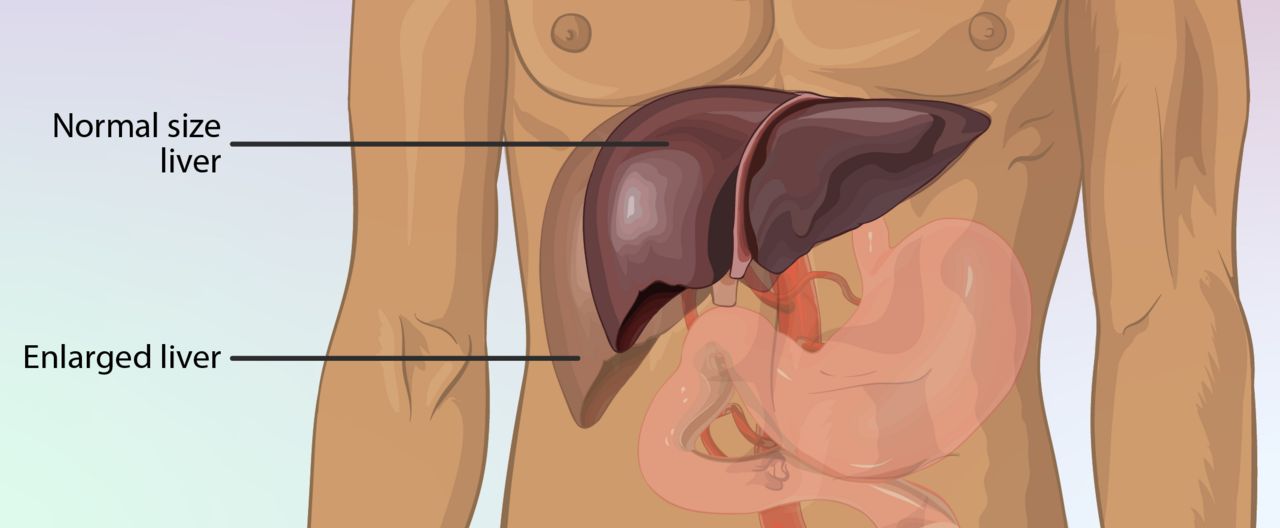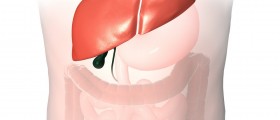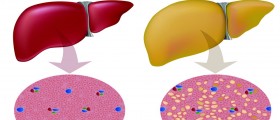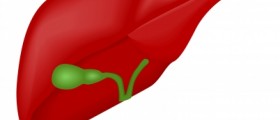The Liver and Its Functions
The liver is a very important gland in the human body. It is located in the abdomen in the upper right part, right below the diaphragm. The liver is included in the many metabolic processes and is a rather significant role-player of homeostasis. The liver is in charge of the digestion of fats, production of bile, and regulation of many chemicals in the blood. It is also essential for the production of many proteins and removal of the waste products and toxins from the body.
Enlargement of the liver is medically known as hepatomegaly. It always points to the presence of an underlying medical condition and needs to be taken seriously.
Different Causes of Enlarged Liver
Enlarged liver is not a medical condition per se but only a symptom or a sign of some other medical conditions.

The most common causes of liver enlargement include liver cirrhosis, liver infections such as hepatitis A, B, and C, infectious mononucleosis, alcoholic and non-alcoholic fatty liver disease, hemochromatosis, and amyloidosis. An enlarged liver is also a characteristic of Wilson's disease and Gaucher's disease.
The enlargement may be additionally caused by liver cysts, hemangiomas, and adenomas. It also occurs if there is gallbladder or bile duct obstruction. Hepatomegaly can be a consequence of toxic hepatitis.
The liver gets enlarged due to many cancers, including primary and secondary liver cancers, leukemia, lymphomas, etc. Budd-Chiari syndrome is another medical condition that features with enlarged liver. Finally, heart conditions such as pericarditis, tricuspid regurgitation as well and congestive heart failure always lead to hepatomegaly.
Symptoms of Enlarged Liver
Mild liver enlargement is usually asymptomatic. This organ is not innervated by the nerves which can identify pain. This is why the liver may become huge, and the patient still would not feel any pain. However, significant enlargement does compress surrounding organs and tissues and causes certain symptoms and signs. They include the feeling of fullness, discomfort in the upper right part of the abdominal cavity, fatigue, and yellowing of the skin (in the presence of jaundice).
Diagnosis and Treatment for Enlarged Liver
Hepatomegaly can be easily palpated. The doctor also performs an ultrasound of the abdomen which gives perfect insight into the hepatomegaly. However, sometimes, patients need to undergo a CT scan of the abdomen to determine the exact cause of liver enlargement.
- There are multiple reported methods to determine liver size. Clinicians estimate hepatic size using palpation and percussion techniques. The liver/lung edge and lower liver edge in the mid-clavicular line are localised using palpation by tapping the skin and listening for dull or resonant percussion notes to indicate the liver edges.
- The liver can be easily measured using ultrasound; however, common measurement techniques provide linear measurements rather than volume measurements, and there is lack of clarity in the literature around ultrasound measurement methods and cut-off values for normal liver size using 2D ultrasound.
- Two ultrasound images of the liver and a blood test were taken from 126 participants. Three simple linear measurements were taken from these two images and converted to a liver volume using a published equation.
- The reference range for liver volume in adults without liver pathology was found to be 1060–2223?cm3.
- Sonographers routinely assess liver size using ultrasound. There is a lack of standardisation of measurement method and adopted cut-off value with the accepted plane of measurement and cut-off values used varying greatly from department to department. A popular current sonographer practice is to measure the liver in the mid-clavicular line from a longitudinal image.
The treatment of liver enlargement includes treatment of the underlying cause. In case of infections, the patients are advised to stay in bed, and they need to make certain dietary changes. Alcoholic fatty liver disease is treated with abstinence from alcohol.
Cirrhosis requires more aggressive treatment, especially in the advanced stages of the disease. And treatment of a tumor depends on the stage of the disease and whether the tumor is primary or secondary.
- www.nhs.uk/conditions/liver-disease/
- www.cdc.gov/epstein-barr/about-mono.html
- Photo courtesy of https://www.myupchar.com/en by Wikimedia Commons: commons.wikimedia.org/wiki/File:Depiction_of_an_enlarged_liver.png

















Your thoughts on this
Loading...